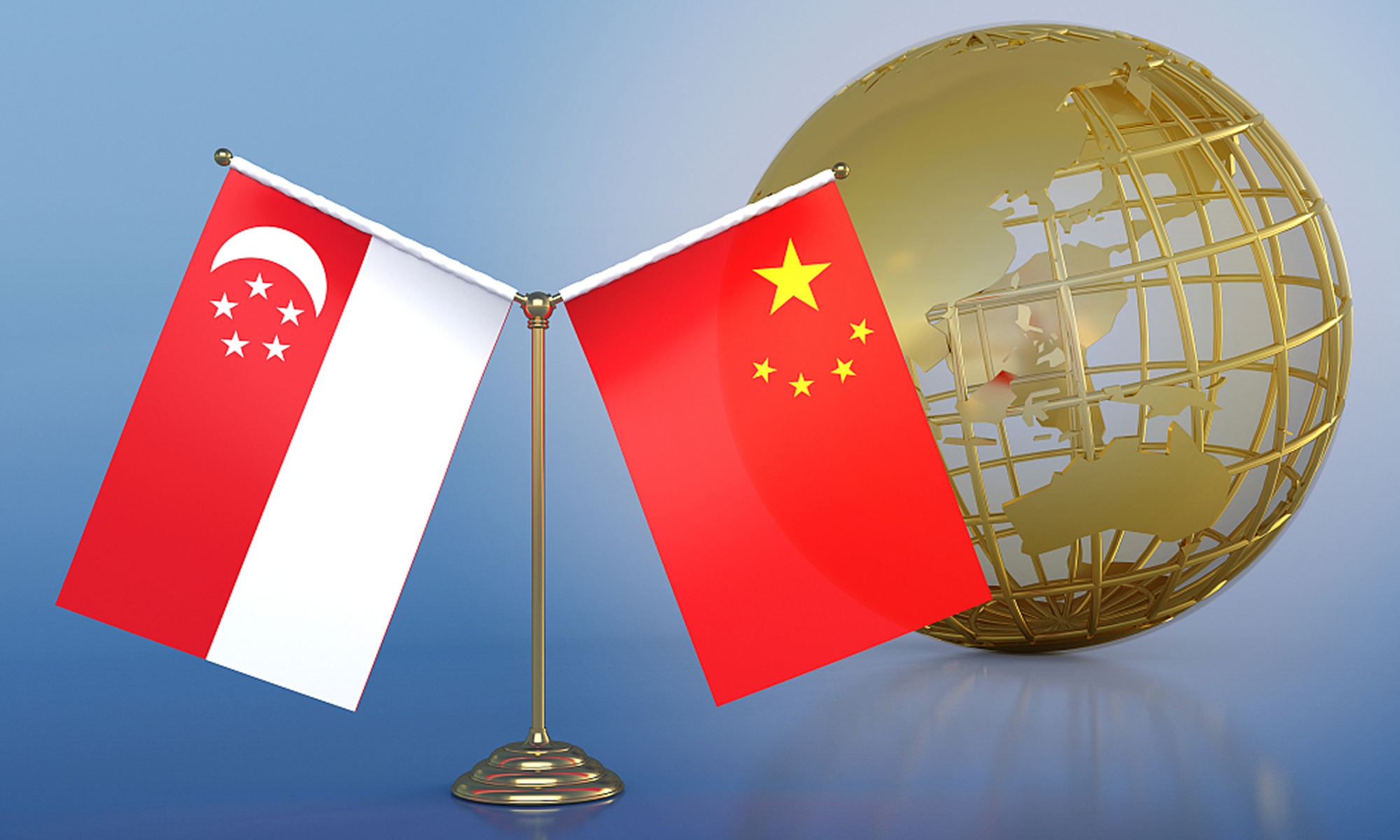
China Singapore Photo:VCG
China and Singapore announced on Thursday that they have reached a protocol to further upgrade the China-Singapore Free Trade Agreement (FTA), China's Ministry of Commerce (MOFCOM) said, noting the signing of the milestone protocol will stimulate the potential of services trade and investment cooperation further, and the two sides will step up their domestic legal procedures for the protocol's early entry into force.
China and Singapore jointly announced the commencement of negotiations on further upgrading of the FTA on December 8, 2020. Over the past three years, the working teams of both sides have conducted several rounds of intensive consultations and completed all negotiations.
Under the protocol, the two countries committed to a negative-list model of services and investment opening-up, which will provide broader space for investors and services providers and expand cooperation in emerging fields such as the digital economy, according to the MOFCOM.
The MOFCOM cited some features and highlights in the protocol. Through the upgrade, market access in the area of trade in services and investment between China and Singapore has completed the leap to a negative-list management system from the positive-list approach. After the upgrade, except for the prohibited or restricted areas on the negative list, enterprises of both sides can engage in all other services trade and investment activities.
Singapore is committed to not imposing any restrictions in the vast majority of manufacturing sectors. It has also made high-level opening-up commitments in a number of areas of key concern to China, such as environmental protection and maritime transport, creating greater opportunities for Chinese enterprises to further develop the new market. The Chinese side has made more opening-up commitments in a wide range of areas, including cargo transportation, onshore petroleum exploration and distribution, and healthcare.
In addition, the two sides also promoted cooperation in emerging areas in the protocol, including telecommunication services and digital economy. According to the MOFCOM, the two countries will further promote cooperation in emerging fields, including electronic payment, digital identity, data flow and smart city.
The protocol benchmarks international high-standard economic and trade rules, incorporates high-level rules for the liberalization of cross-border trade in services and investment based on the negative-list approach, and makes commitments to further opening-up. The signing of the protocol is one of the important symbols of China's entry into the era of high-standard negative lists in its FTA negotiations, and will lay a more solid foundation for China's accession to the Comprehensive and Progressive Trans-Pacific Partnership (CPTPP), the MOFCOM noted.
On the same day, the Monetary Authority of Singapore (MAS) announced new digital finance and capital markets initiatives to expand its financial cooperation with China.
The initiatives include a cross-border digital yuan pilot between China and Singapore. Following the signing of a Memorandum of Understanding on digital finance cooperation in 2020 between MAS and the Digital Currency Institute, People's Bank of China (PBCDCI), MAS and PBCDCI are embarking on a pilot program that will allow travelers from both countries to use the digital yuan for tourism spending in Singapore and China. This will enhance convenience for travelers when making purchases during their overseas travel, according to the MAS.
Global Times




